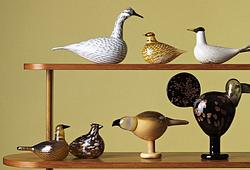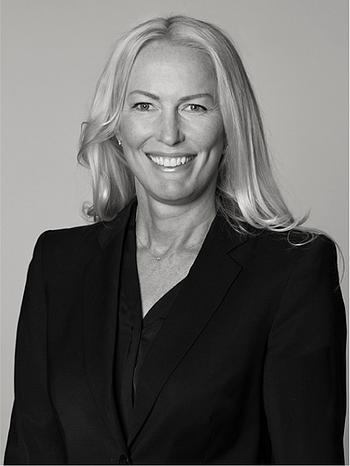Anders Bruno Liljefors
A stoneware bowl and a vase, Gustavsberg studio ca 1950.
Height 6,5 and 24,5 cm, diameter of the bowl 15,5 cm.
Saleroom notice
Följerätt utgår endast om snittpriset överstiger minimipriset (2215 kr/objekt), dvs om det klubbade priset överstiger 4.430 kr.
Provenance
The Collection of Hjalmar Olson (1902-1990), Gustavsberg.
Hjalmar Olson was president of Gustavsberg Porcelain Factory 1937-1968, and a Vice Chairman of LKAB 1962-1973. He was elected in 1942 as a member of the Academy of Engineering Sciences, where he was 2nd Vice Chairman from 1954 to 1956, and was appointed as the first honorary member in 1963. He received his degree in 1962 honorary doctor of technology at the Royal Institute of Technology in Stockholm.
As an engineer he studied modern porcelain industry in Germany. This took him to Gustavsberg porcelain factory already in 1929.
With his great interest in art and craft, he built up a private collection where quality was always of utmost importance. With help from close friends like Estrid Ericson, owner of Svenskt Tenn, he created his collection during the middle of the 1900's.
Designer
Ceramicist and painter Anders Bruno Liljefors studied at the Royal Academy of Fine Arts from 1945 to 1947. He worked at Gustavsberg's Studio during the periods 1947-53 and 1955-57, as well as at his own studios in Roslagen and in Blekinge. Liljefors started at the Gustavsberg factory as a handyman, but his talent was quickly noticed by Wilhelm Kåge, who, after just a few weeks, provided Liljefors with his own studio in the Studio where he primarily worked with stoneware. Soon, Liljefors had his own turner, Dan Malmborg, and together they developed the rustic grey-green stoneware that became his breakthrough. His first solo exhibition was at Nordiska Kompaniet in Stockholm in 1952. It was a success, with most pieces sold. In 1955, he conducted the first experimental trials with sand casting, which attracted significant media attention when presented in the factory's shop on Birger Jarlsgatan in Stockholm. Writers were surprised, puzzled, delighted, and sceptical; terms like "Ceramic Neo-Brutalism" were coined, some saw new possibilities within architecture, while others were less impressed by the collection. These primitive and bold forms were nonetheless groundbreaking, and the Swedish stoneware tradition was thereby energised to develop in new directions. In 1961, Liljefors received the first Kåge Scholarship for his "strongly personal and refreshingly innovative style". During the 1960s, he carried out around 15 public decorations, ranging from minor decorations to entire walls.
Read more





































